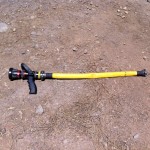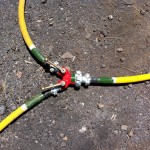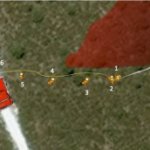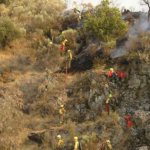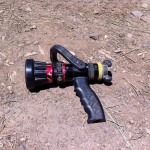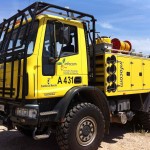
As wildland fuel builds up in Europe, firefighters have adopted quick water deployment tactics to increase Initial Attack speed and success.
By Juan Caama
In Mediterranean Europe, the last few decades have been characterized by dramatic land use changes. The abandonment of farmland and reduced grazing has led to an increase in wildland areas. These changes in the landscape have contributed to a more aggressive spread of large wildfires (LWF) all over Europe.
The response of most European societies to this problem has generally been to strengthen fire suppression policies with the overall aim to increase their fire suppression capacity. Despite the high investment in fire suppression efforts, wildfires are becoming larger and more intensive, with faster spread rates, which offer only few opportunities for the suppression systems.
This, combined with a growing Wildland Urban Interface (WUI) area, is becoming a huge challenge for firefighters. The need to protect people and their homes is overwhelming their capacity and number. To avoid this issue during high-risk fire situations, a quick response with appropriate suppression resources is needed.
THE RIGHT APPARATUS
When WUI fires erupt in Spain, firefighters rely on a crucial resource, engines with different water capacities. These include Type I: 5,000—12,000 liters, Type 2: 3,000—5,000 liters and Type 3: 1,500 liters.
Other elements in their firefighting arsenal include equipment necessary to build water lines and transport water to the place needed for suppression. Nozzles, for example, can regulate the water volume (liters/minute) and also the width of how water is dispensed, adapting the flow to the type of fire.
Flexible hose is used to fight fires in grass, brush and trees where light-
weight equipment is needed to maneuver over steep or rough terrain. It is typically built with synthetic fiber. Bifurcation (a Y splitting the hose) permits the development of more than one water line from one engine.
PERSONNEL PLACEMENT

For the development of the water lines during fire suppression operation, effective initial attack response requires an automatic response by the responding personnel. Each firefighter involved on the water line will have specific assigned functions that, in turn, support an innovative multiple-nozzle progression that gets water to longer flame front in less time.
In Spain, for example, personnel are often organized in the following manner:
- No. 1: Nozzle. In charge of the application of the water to the fire.
- No. 2: Support to No. 1. Must have communication with the engine and will lead the water line.
- No. 3: Attaches new hoses to the water line as it progresses.
- No. 4: Feeds No. 3 with hoses; supervises the water line and clamps the water line so No. 3 can attach new hoses.
- No. 5: Feeds No. 4 with hoses and supervises the water line.
- No. 6: Manages the engine pump and communicates with No. 2.
Fires in the Mediterranean region usually are fast fires that put structures in danger very quickly, so the response of firefighters and engines must also be fast – as well as the development of water lines. For that reason, light equipment that is easy to transport is used.
What’s more, it’s very important that each firefighter involved in the development of the water line knows the line’s functions. This will improve the safety and efficiency of the operation.

